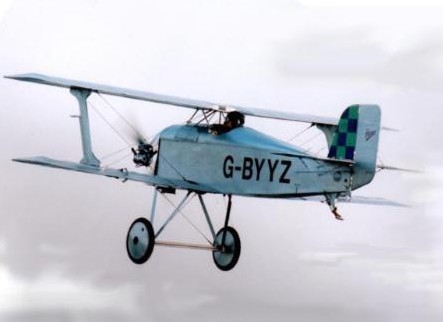October 02, 2001
I viewed Tony Morris' Z-21A a couple of weeks ago, at Fairoaks, near London. He has done a first class job on it. It took some 30 months of part time, but steady work, to complete, and could have been flying last Christmas but for the atrocious weather, and some small changes to the engine mount and harness attachment that the PFA required him to make. These were not associated with the plan detail, just small changes (perfectly safe mods) that Tony had made for convenience, which they demanded he re-modify.
He has flown over 20 hrs. in it now, and of the five homebuilts he has made, says this is by far the most rewarding, nicest to fly and most fun. He confirms that the cockpit is really warm for an open cockpit machine, despite the small windscreen (and he's taller than me) and the handling is superb. After some initial difficulty trying to land (at too flat an approach attitude - attempting to see over the nose and coming in too fast, with the inevitable bounce into the stratosphere) he has sorted it out, and now says it's a pussycat, as long as you forget about forward view after you start to flare.
My own first landing on the Z-1 prototype was from a slipping turn, where I could view the point of touchdown until the last moment, kicking off drift just before settling, resulted in a featherlight three-pointer. But I realised that there was sufficient peripheral info.
to monitor the landing without having to slip, and my second landing was 'straight in'. Since then I have adapted my technique to suit the conditions, and have made just about every type of combination approach, especially in gusty, crosswinds, that the situation has demanded, without any difficulty whatsoever. The controls are so powerful, especially if you keep a few knots in hand in windy conditions, that the aeroplane will cope.
I have written a few sheets of handling notes and 'does and dont's' which I will send to everybody when I think I have covered everything. One thing you will notice is that on take off, unless you make a positive backward movement of the stick at the appropriate moment, the Flitzer will go on gathering speed whilst firmly fixed to the ground, until it rams the scenery in a shower of debris! This is because, if balanced and trimmed correctly, it thinks it is already flying in cruise/trim condition, at which it is perfectly 'pitch stable'. Don't forget, there is no trim on the aeroplane, because it doesn't need one.
My technique is to start the take off roll with the stick neutral. As soon as acceleration gets underway, I ease forward on the stick and the tail rises almost immediately (unless you have overloaded the locker!). Very little rudder is needed to keep straight, and within 5 seconds of start, I gently begin tugging at the stick to feel for any lift. Within 2 seconds, usually, the wheels become light, and at 45 mph the Flitzer climbs easily away, seemingly at a very steep angle. Best climb speed, to maintain cooling, is about 58-60 mph., which relates to about 750 fpm. on a cool day.
I then throttle back in the climb to save engine strain, and go on to (hopefully) have a nice day!
Best wishes,
Lynn Williams
May 26, 2004
Hi Flitzerfans,
Here's some recently discovered still pictures showing a typical take off, in sequence, from a fixed viewpoint, of the basic Flitzer, the prototype Z-1. Take off is improved with propeller efficiency and the larger elevator on the 'plans' Z-21 machine.
However, it still got off quickly with the original set up, and acceleration felt very good. With the AeroVee installation, the Z-21 should dramatically exceed these figures. Smaller, lighter types, such as the Goblin and Meteor would be even more improved, as would the Stummelflitzer Type S.
The Corvair-powered Z-3 Falke should be in the same league as the SK26 and Type R Stummel with the Rotec R2800 installations.
The Z-2, two-up with the AeroVee, would probably perform like the VW-powered Z-21, due to the greater wing area and drag.
Other pictures to follow soon from this period.
Lynn




